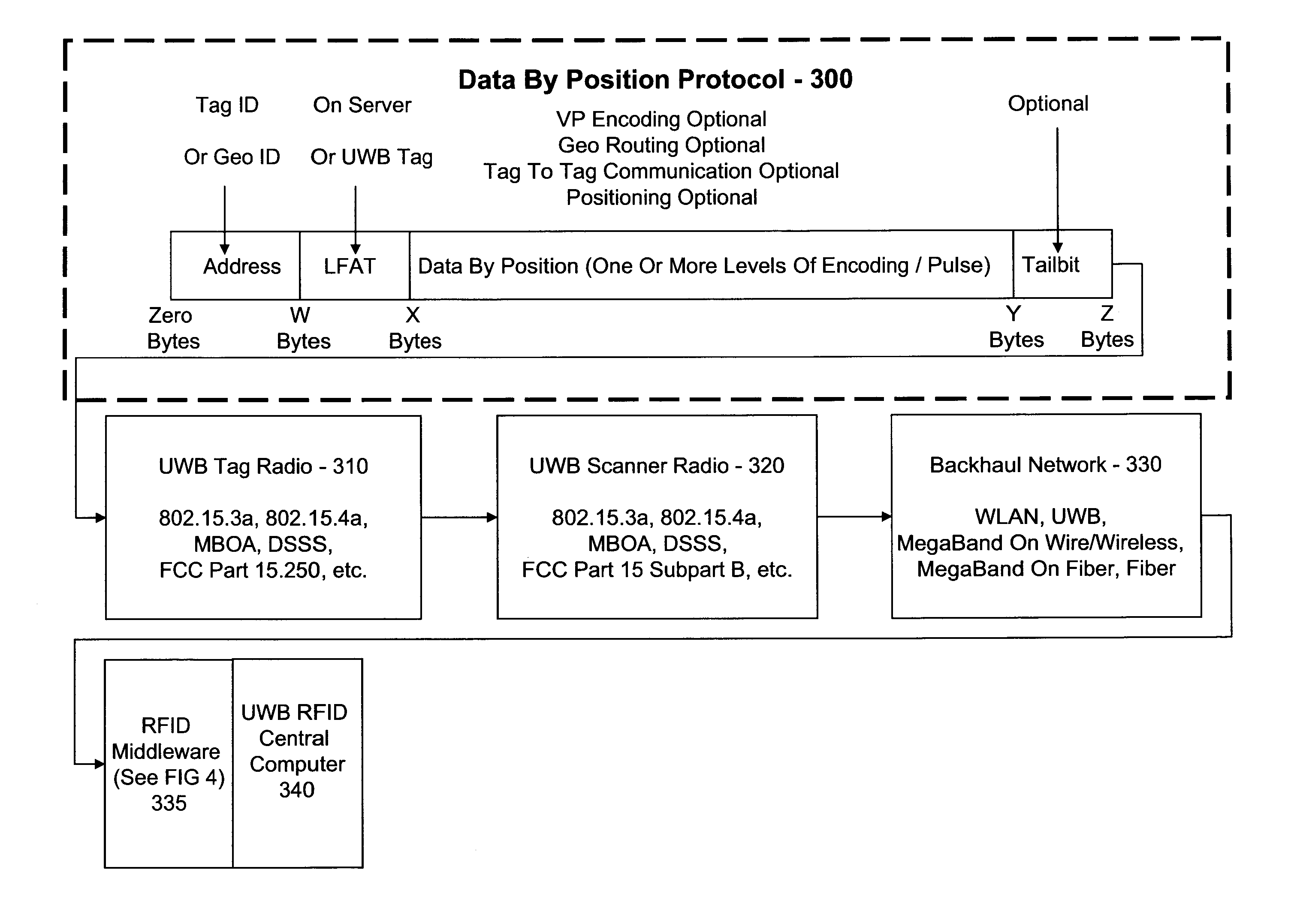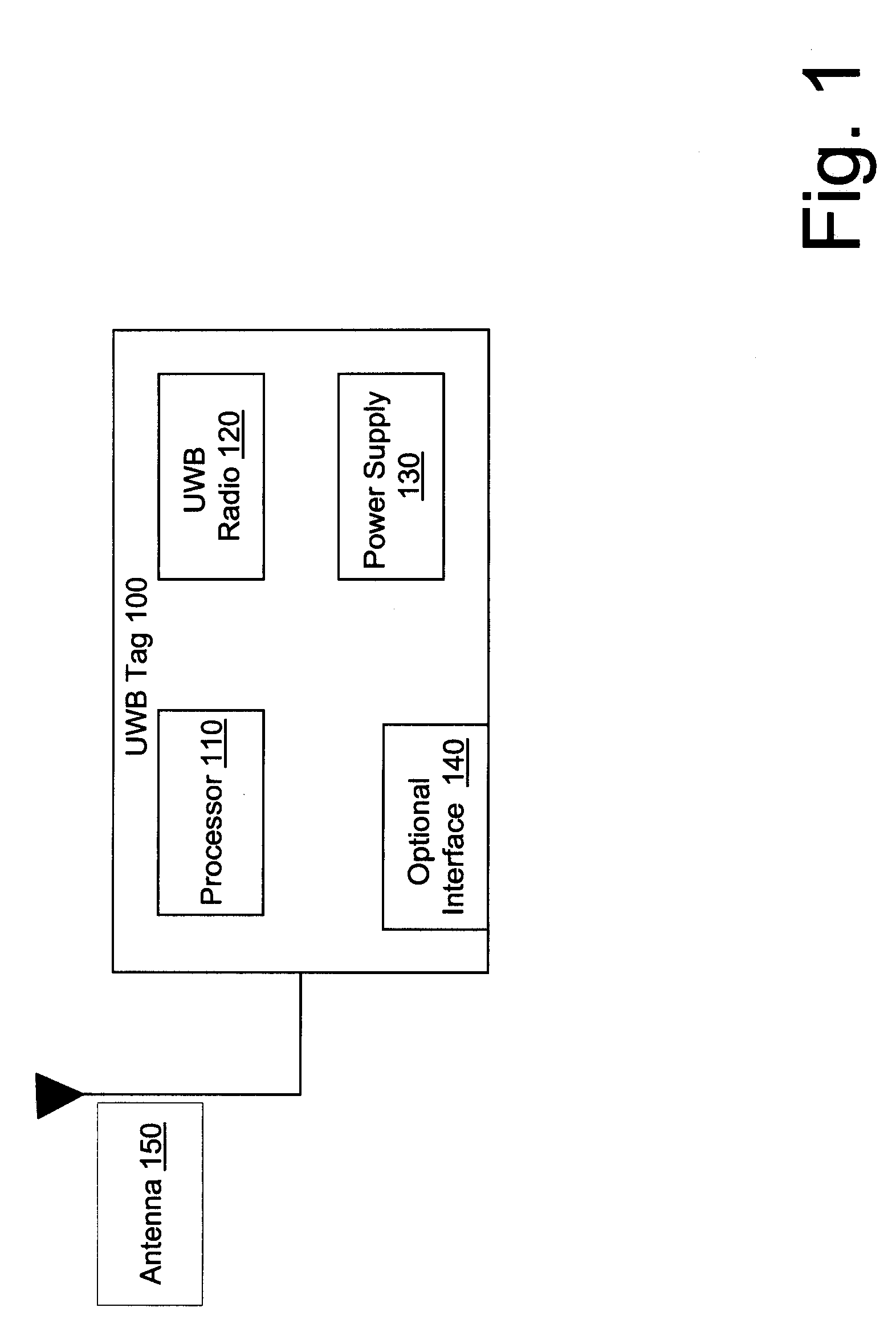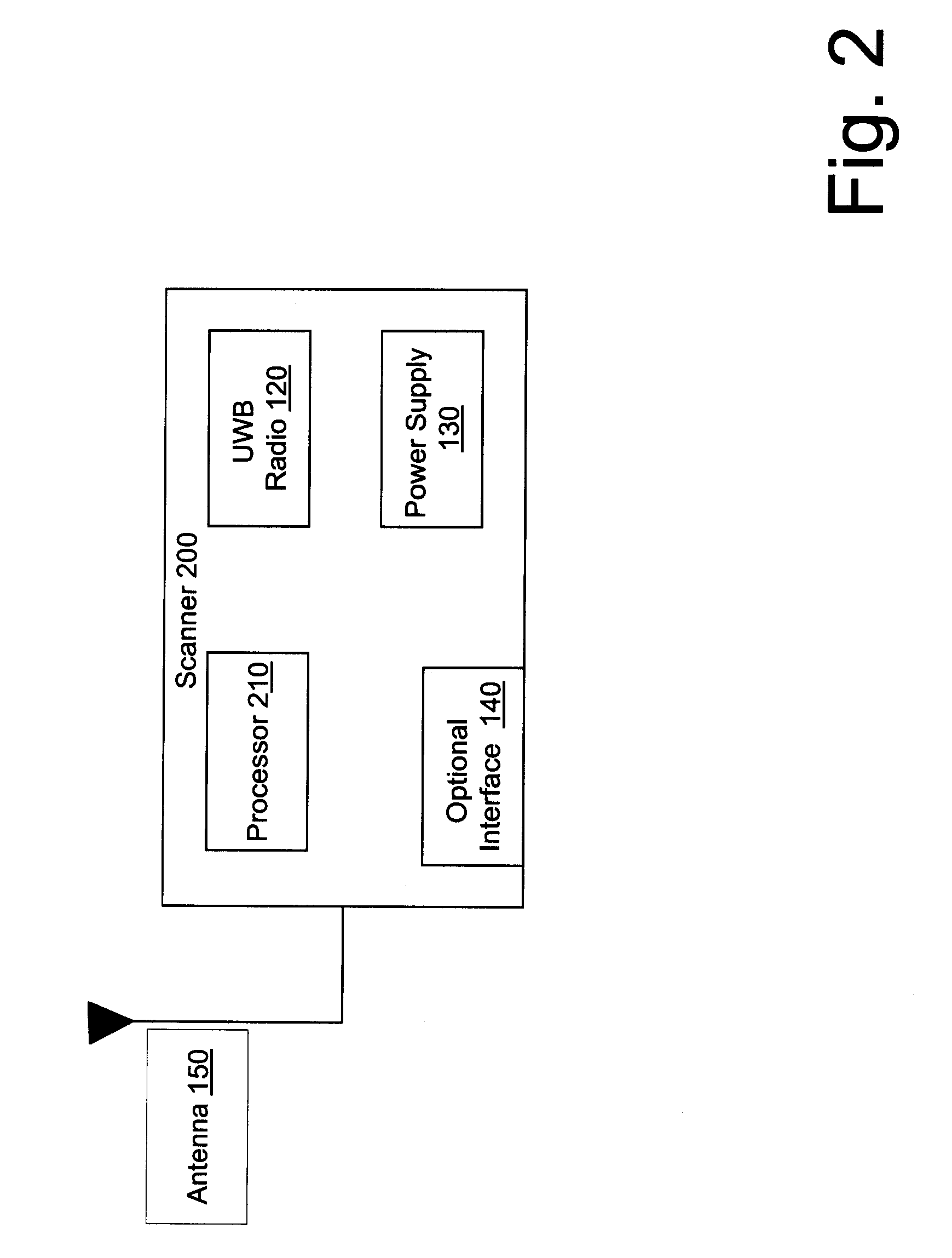Ultra wideband radio frequency identification system, method, and apparatus
- Summary
- Abstract
- Description
- Claims
- Application Information
AI Technical Summary
Benefits of technology
Problems solved by technology
Method used
Image
Examples
Embodiment Construction
)
[0292] A preferred embodiment of the present invention will be described as it applies to its preferred embodiment. It is not intended that the present invention be limited to the described embodiment. It is intended that the invention cover all modifications and alternatives which may be included within the spirit and scope of the invention.
[0293] A feature of the present invention is a UWB pulse-based structured linear database which provides a common platform for the transmission and receipt of RFID partitioned data. The reigning standard for wave-oriented RFID is the Electronic Product Code (EPC) standard. The following comes from an EPC document entitled The EPC Global Architecture Framework, page 11, line 296-305, “For trading partners to exchange information, they must have prior agreement as to the structure and meaning of data to be exchanged, and the mechanisms by which exchange will be carried out. EPCglobal standards include data standards and information exchange stan...
PUM
 Login to View More
Login to View More Abstract
Description
Claims
Application Information
 Login to View More
Login to View More - R&D
- Intellectual Property
- Life Sciences
- Materials
- Tech Scout
- Unparalleled Data Quality
- Higher Quality Content
- 60% Fewer Hallucinations
Browse by: Latest US Patents, China's latest patents, Technical Efficacy Thesaurus, Application Domain, Technology Topic, Popular Technical Reports.
© 2025 PatSnap. All rights reserved.Legal|Privacy policy|Modern Slavery Act Transparency Statement|Sitemap|About US| Contact US: help@patsnap.com



